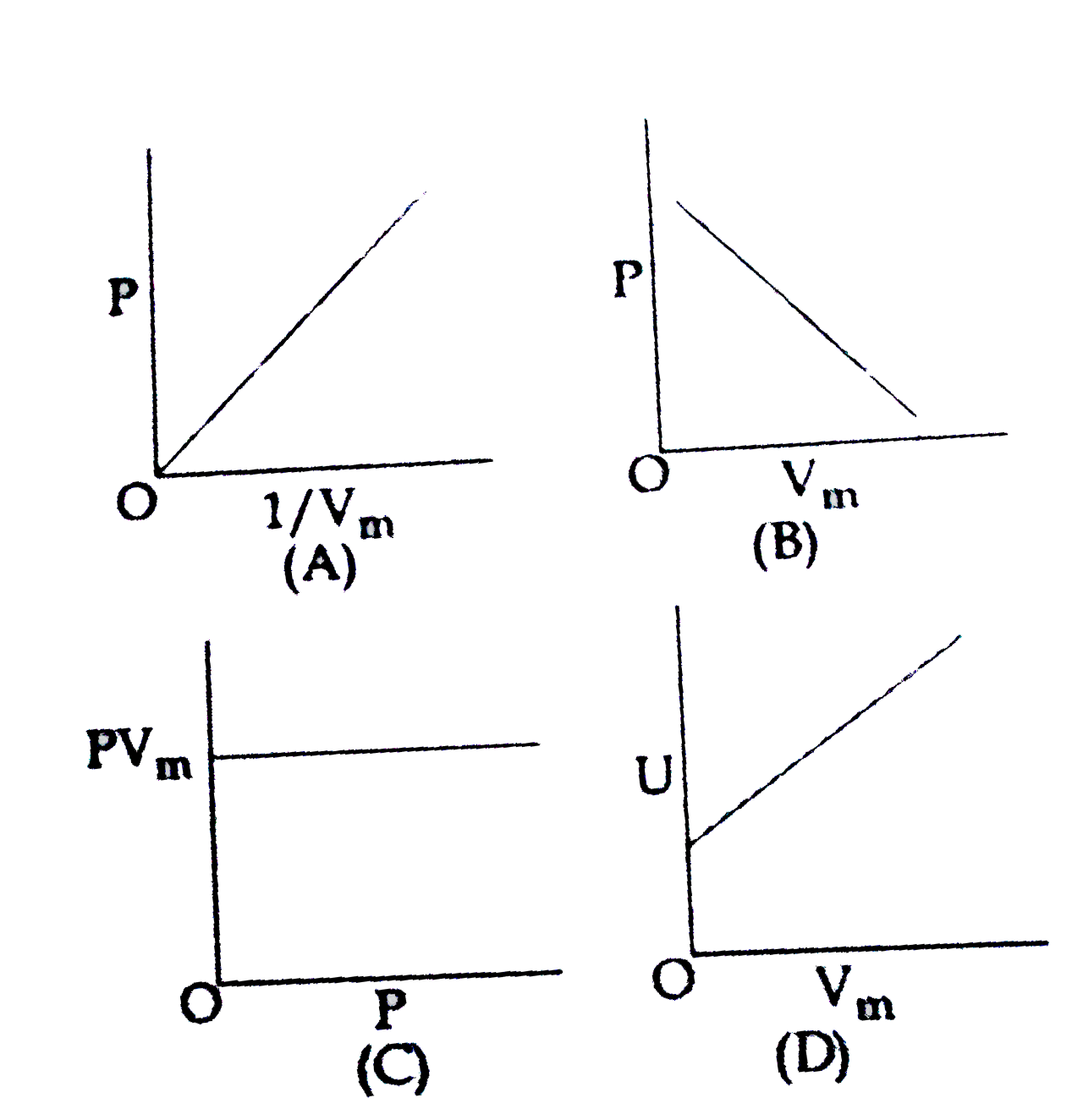In reversible isothermal expansion of an ideal gas :
w = 0
U1=U2
H1=H2
q=nRTln.V2V1
The correct Answer is:B, C, D
To solve the problem of reversible isothermal expansion of an ideal gas, we can follow these steps:
Step 1: Understand the System
In a reversible isothermal expansion, the temperature (T) of the gas remains constant throughout the process. For an ideal gas, the internal energy (U) depends only on temperature.
Hint: Remember that for an ideal gas, internal energy is a function of temperature only.
Step 2: Apply the First Law of Thermodynamics
The first law of thermodynamics states:
ΔU=Q−W
Where:
- ΔU = change in internal energy
- Q = heat added to the system
- W = work done by the system
Hint: Identify the terms in the equation and remember that for isothermal processes in ideal gases, the change in internal energy (ΔU) is zero.
Step 3: Determine Change in Internal Energy
Since the process is isothermal, the change in internal energy (ΔU) is zero:
ΔU=0
Thus, we can rewrite the first law as:
0=Q−W
This implies:
Q=W
Hint: Recognize that if ΔU=0, then heat added to the system is equal to the work done by the system.
Step 4: Calculate Work Done (W)
For a reversible isothermal expansion of an ideal gas, the work done (W) can be expressed as:
W=−∫V2V1PextdV
For an ideal gas, using the equation of state PV=nRT, we can express the work done as:
W=nRTlnV2V1
Hint: Use the ideal gas law to relate pressure, volume, and temperature.
Step 5: Calculate Heat Added (Q)
Since we established that Q=W, we substitute the expression for work:
Q=nRTlnV2V1
Hint: This shows that the heat added to the system during isothermal expansion is equal to the work done by the gas.
Step 6: Change in Enthalpy (ΔH)
For an ideal gas, the change in enthalpy (ΔH) is given by:
ΔH=nCpΔT
Since the temperature is constant in an isothermal process, ΔT=0, thus:
ΔH=0
This means that the change in enthalpy is also zero:
H2−H1=0
or
H2=H1
Hint: Remember that enthalpy change for an ideal gas at constant temperature is zero.
Final Summary
- The heat added to the system during the reversible isothermal expansion is Q=nRTlnV2V1.
- The work done by the system is W=nRTlnV2V1.
- The change in internal energy ΔU=0.
- The change in enthalpy ΔH=0.
In a reversible isothermal expansion, the temperature (T) of the gas remains constant throughout the process. For an ideal gas, the internal energy (U) depends only on temperature.
The first law of thermodynamics states:
ΔU=Q−W
Where:
- ΔU = change in internal energy
- Q = heat added to the system
- W = work done by the system
Since the process is isothermal, the change in internal energy (ΔU) is zero:
ΔU=0
0=Q−W
This implies:
Q=W
For a reversible isothermal expansion of an ideal gas, the work done (W) can be expressed as:
W=−∫V2V1PextdV
For an ideal gas, using the equation of state PV=nRT, we can express the work done as:
W=nRTlnV2V1
Since we established that Q=W, we substitute the expression for work:
Q=nRTlnV2V1
For an ideal gas, the change in enthalpy (ΔH) is given by:
ΔH=nCpΔT
Since the temperature is constant in an isothermal process, ΔT=0, thus:
ΔH=0
H2−H1=0
or
H2=H1
- The heat added to the system during the reversible isothermal expansion is Q=nRTlnV2V1.
- The work done by the system is W=nRTlnV2V1.
- The change in internal energy ΔU=0.
- The change in enthalpy ΔH=0.
Topper's Solved these Questions
Similar Questions
Consider the reversible isothermal expansion of an ideal gas in a closed system at two different temperatures T1 and T2(T1<T2). The correct graphical depiction of the dependence of work done (w) on the final volume (V) is:
View SolutionInternal energy change during a reversible is isothermal expansion of an ideal is :-
View SolutionIn the isothermal expansion of an ideal gas
View SolutionFor an isothermal expansion of an ideal gas
View SolutionFor the isothernmal expansion of an ideal gas
View SolutionThe combination of plots which does not represent isothermal expansion of an ideal gas is :
 View Solution
View SolutionThe combination of plots which does not represent isothermal expansion of an ideal gas is :
View SolutionFor isothermal expansion in case of an ideal gas :
View Solutionisothermal elasticity of an ideal gas is
View SolutionThe change in entropy of an ideal gas during reversible isothermal expansion is
View Solution

